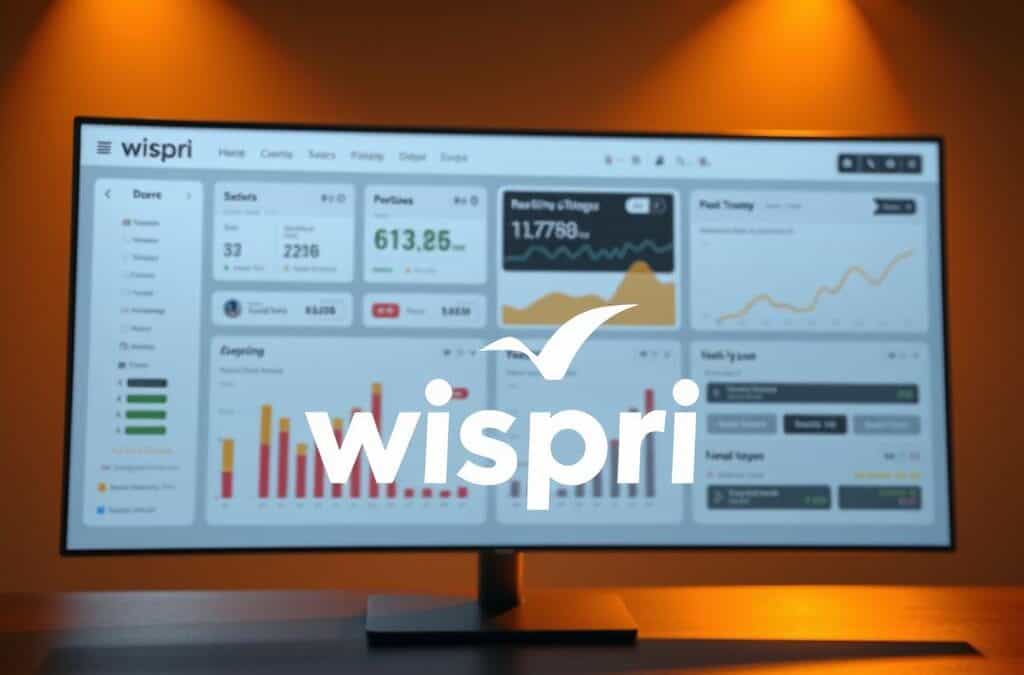In today’s fast-paced market, staying competitive means adapting quickly. A dynamic pricing strategy allows businesses to adjust their pricing in real-time based on demand, competition, and other factors. This approach isn’t just for giants like Amazon or Uber—it’s a game-changer for any business looking to thrive.
By leveraging data and algorithms, you can optimise your price points to maximise revenue and enhance customer satisfaction. For example, Amazon uses real-time data to adjust prices, ensuring they stay ahead of competitors. Similarly, Uber’s surge pricing balances supply and demand during peak times.
Adopting a dynamic pricing strategy helps you respond to market changes swiftly. It’s not just about increasing profits—it’s about creating a seamless experience for your customers. Ready to take the next step? Visit Wispri now and start tracking prices from your favourite ecommerce stores.
Key Takeaways
- Dynamic pricing helps businesses stay competitive in real-time.
- It boosts revenue and improves customer experience.
- Companies like Amazon and Uber use it effectively.
- Real-time data and algorithms are key to success.
- Wispri offers tools to track prices and implement this strategy.
Understanding Dynamic Pricing Fundamentals
Modern markets demand agility, and real-time adjustments are key to success. At its core, dynamic pricing is a strategy that allows businesses to adapt their product costs based on demand, supply, and other market factors. This approach ensures you stay competitive while maximising revenue.
Imagine a scenario where customer interest spikes unexpectedly. With real-time data, you can adjust your prices instantly to capitalise on this surge. This not only boosts profits but also enhances service quality by meeting customer needs efficiently.
How Dynamic Pricing Works in Real-Time
Dynamic pricing relies on advanced algorithms to analyse market conditions. These systems process vast amounts of data, including competitor pricing, customer behaviour, and product availability. The result? Instant price adjustments that keep you ahead of the curve.
“Real-time pricing is not just about reacting to the market—it’s about anticipating it.”
For example, during peak hours, ride-sharing apps like Uber increase fares to balance demand and supply. Similarly, e-commerce giants like Amazon adjust prices multiple times a day to stay competitive.
The Role of Data Analytics and AI Technologies
Data analytics and AI are the backbone of dynamic pricing. These technologies enable businesses to predict trends, understand customer preferences, and set optimal prices. By leveraging actionable insights, you can make informed decisions that drive growth.
Here’s a quick breakdown of how these tools work:
| Technology | Function |
|---|---|
| Data Analytics | Analyses historical and real-time data to identify patterns. |
| AI | Predicts future trends and automates price adjustments. |
| Algorithms | Processes data to recommend optimal pricing strategies. |
Ready to revolutionise your pricing approach? Tools like Wispri make it easy to track prices and implement real-time strategies. Start today and stay ahead in the competitive market.
Exploring the Importance of Dynamic Pricing
Adapting to market shifts is essential for any business aiming to thrive. Real-time adjustments allow companies to respond to changes in supply demand, market condition, and competitor behaviour. This flexibility ensures you stay ahead in a competitive landscape.

Market Response and Adaptability
When market condition changes, businesses must act quickly. For example, ride-sharing apps adjust fares during peak hours to balance supply demand. Similarly, e-commerce giants like Amazon modify prices multiple times a day to remain competitive.
Using datum and advanced analytics, you can predict trends and make informed decisions. This approach not only boosts revenue but also enhances your product service offerings.
Impact on Revenue, Profit, and Customer Behaviour
Real-time pricing directly influences your company’s profitability. By analysing competitor moves and customer behaviour, you can set optimal prices that maximise revenue.
For instance, during high-demand periods, adjusting prices can lead to significant profit gains. At the same time, it ensures your product service remains accessible to customers.
| Factor | Impact |
|---|---|
| Supply Demand | Balances availability and pricing. |
| Competitor Behaviour | Helps you stay ahead in the market. |
| Customer Behaviour | Tailors pricing to meet consumer needs. |
Ready to harness the power of real-time data? Tools like Wispri make it easy to track prices and adapt your strategies. Start today and take your business to the next level.
Dynamic Pricing Strategy and Implementation
Crafting a tailored approach to pricing can transform your business outcomes. A well-designed strategy ensures you respond to market shifts effectively while maximising revenue and maintaining customer trust.
Crafting Your Dynamic Pricing Strategy
Building a bespoke strategy starts with analysing key factors like cost, sale conditions, and potential for profit improvement. For example, ride-sharing platforms adjust fares during peak hours to balance demand and supply.
Here’s how you can develop your strategy:
- Evaluate your cost structure to ensure profitability.
- Monitor sale conditions and competitor behaviour.
- Use real-time data to make informed adjustments.
Companies like Fasten and Uber have successfully implemented this approach, avoiding customer backlash by being transparent about their pricing models.
Leveraging Algorithms and Real-Time Data
Advanced algorithms and real-time data are essential for effective pricing. These tools analyse market conditions, customer behaviour, and competitor moves to recommend optimal prices.
For instance, hotels use upfront pricing to adjust rates based on demand, ensuring they maximise revenue without alienating customers. This approach highlights the importance of balancing flexibility with transparency.
“Real-time data empowers businesses to anticipate market changes and act swiftly.”
By integrating these technologies, you can optimise pricing for both high-demand and low-demand scenarios, ensuring consistent profit growth.
Ready to take the next step? Explore Wispri’s tools to craft your strategy and stay ahead in your industry. Start today and unlock the full potential of dynamic pricing.
Integrating Dynamic Pricing into Your Ecommerce Business
Ecommerce success hinges on your ability to adapt swiftly to market changes. Real-time adjustments ensure you stay competitive while maximising revenue. Tools like Wispri make it easy to track prices and respond to shifts in demand, supply, and competitor behavior.
Tracking Prices with Wispri
Wispri’s platform allows you to monitor price changes at every level of your inventory. This real-time data helps you make informed decisions, ensuring you’re always one step ahead. For example, during peak shopping events, you can adjust prices to capitalise on increased demand.
Here’s how Wispri simplifies the process:
- Track competitor pricing in real-time.
- Analyse customer behavior to predict trends.
- Adjust prices instantly to stay competitive.
Optimising Your Ecommerce Strategy
Using a data-driven approach, you can optimise your ecommerce strategy for maximum impact. Real-time price tracking helps you respond to key market events, such as seasonal sales or sudden demand spikes. This ensures you’re always offering the best value to your customers.
“Real-time pricing tools empower businesses to anticipate market changes and act swiftly.”
Here’s a breakdown of how this approach benefits your business:
| Benefit | Impact |
|---|---|
| Improved Responsiveness | React quickly to market shifts. |
| Enhanced Customer Insights | Understand purchase behavior better. |
| Operational Efficiency | Streamline pricing adjustments. |
Ready to take your ecommerce business to the next level? Start using Wispri today to track prices and implement real-time strategies. Stay ahead in the competitive market and maximise your revenue potential.
Benefits of Dynamic Pricing for Business Growth
Staying ahead in today’s competitive market requires innovative strategies. Implementing dynamic pricing also ensures your business remains agile and responsive to market changes. This approach not only boosts profitability but also enhances your platform’s ability to deliver value to customers.
Enhancing Competitiveness and Profitability
Dynamic pricing allows you to adjust your strategy based on key factors like demand, supply, and competitor pricing. For example, airlines and hotels use this method to optimise revenue during peak seasons. By leveraging advanced software, you can automate these adjustments, ensuring your pricing remains competitive.
Here’s how it works:
- Analyse real-time data to identify trends.
- Adjust prices to maximise profit margins.
- Respond swiftly to competitor pricing strategies.
Real-Life Examples from Leading Retailers
Many leading retailers and service providers have successfully implemented dynamic pricing. For instance, airlines adjust ticket prices based on demand, ensuring they fill seats while maximising revenue. Similarly, e-commerce platforms use this strategy to stay ahead in a crowded market.
“Dynamic pricing software empowers businesses to anticipate market changes and act swiftly.”
These examples highlight how understanding key factors like customer behaviour and market conditions can drive growth. By adopting this approach, you can add substantial value to your business model.
Ready to explore these benefits further? Visit Wispri today and discover how our innovative price-tracking solutions can help you stay competitive and profitable.
Challenges and Best Practices in Dynamic Pricing
Navigating the complexities of dynamic pricing requires a strategic approach. While it offers significant benefits, it also comes with challenges that need careful handling. From technical hurdles to maintaining customer satisfaction, addressing these issues is key to success.

Overcoming Technical and Operational Hurdles
One of the biggest challenges is managing your inventory effectively. Fluctuating prices can lead to stock issues if not monitored closely. Using tools like Wispri helps you track inventory levels and make informed decisions.
Another hurdle is ensuring profitability amid constant price adjustments. Gradual change is often better than sudden shifts, as it minimises disruption and keeps your brand reputation intact.
For example, companies that implement dynamic pricing gradually see fewer customer complaints. This approach allows customers to adapt to price changes without feeling overwhelmed.
Ensuring Transparency and Maintaining Trust
Transparency is crucial when implementing dynamic pricing. Customers need to understand why prices change. Clear communication builds trust and enhances customer satisfaction.
Here are some best practices to maintain trust:
- Explain the factors influencing price adjustments.
- Use data to show what customers are willing pay.
- Be upfront about how and why prices change.
For instance, ride-sharing apps like Uber explain surge pricing during peak hours. This transparency helps customers accept higher fares without feeling misled.
“Transparency in pricing builds trust and fosters long-term customer loyalty.”
By addressing these challenges and following best practices, you can implement dynamic pricing effectively. Tools like Wispri simplify the process, helping you track inventory, monitor profitability, and maintain brand integrity. Start today and take your business to the next level.
Conclusion
Embracing a flexible pricing strategy can significantly boost your business’s adaptability and growth. Throughout this article, we’ve explored how real-time adjustments enhance competitiveness, improve revenue, and elevate customer satisfaction. From retail giants to service providers, the benefits are clear.
By leveraging tools like Wispri, you can track prices, analyse trends, and make informed decisions. This proactive approach ensures your business stays ahead in a fast-paced market. Whether you’re managing an ecommerce platform or a service-based business, a well-defined pricing strategy is key to success.
Ready to transform your business? Visit Wispri today and start tracking prices to drive growth and profitability. Take the first step towards a smarter, more responsive pricing model.
FAQ
How does dynamic pricing work in real-time?
It adjusts product or service costs based on current market conditions, demand, and competitor pricing. Algorithms analyse data to set optimal prices instantly.
What role do data analytics and AI play in dynamic pricing?
They process vast amounts of information, such as customer behaviour and supply levels, to make accurate pricing decisions that boost revenue and profitability.
How does dynamic pricing impact customer behaviour?
It influences purchasing decisions by offering competitive rates during peak demand or sales events, enhancing satisfaction and encouraging repeat business.
What factors should I consider when crafting a dynamic pricing strategy?
Focus on market trends, competitor actions, inventory levels, and customer willingness to pay. Use real-time data to refine your approach continuously.
Can dynamic pricing improve my ecommerce business?
Yes, it helps you stay competitive, maximise profits, and respond swiftly to market changes. Tools like Wispri can simplify tracking and optimisation.
What are the challenges of implementing dynamic pricing?
Technical complexities, maintaining transparency, and ensuring customer trust are common hurdles. Clear communication and ethical practices can address these issues.
Are there real-life examples of successful dynamic pricing?
Leading retailers like Amazon and Uber use it effectively to adjust prices based on demand, ensuring higher revenue and customer satisfaction.
How can I ensure transparency in my pricing strategy?
Clearly communicate pricing changes to customers, explain the reasons behind them, and maintain consistency to build trust and loyalty.

